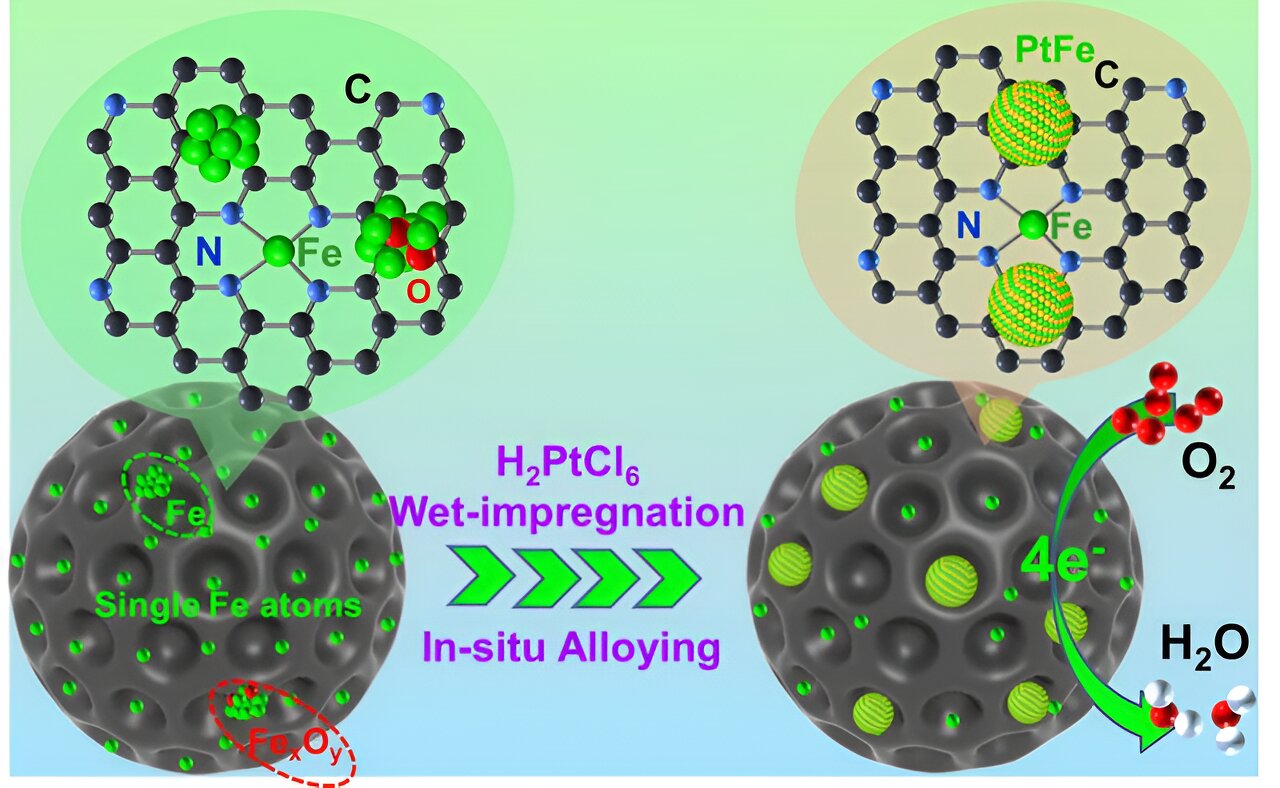Pt-based intermetallic alloys with high activity and stability are incredibly promising for accelerating the cathodic oxygen reduction reaction (ORR) and revolutionizing proton exchange membrane fuel cells on a large scale.
Atomically dispersed Fe-N-C catalysts play a significant role in promoting the efficiency of loaded PtM (M=Fe, Co, Ni, etc.) alloys as the supports towards ORR.
However, during Fe-N-C synthesis, unstable and inefficient iron nanoparticles and iron oxides often form. Overcoming this challenge and effectively utilizing the hybrid Fe-N-C with iron nanoparticles or oxides doping to enhance the efficiency of Pt remains a major hurdle.
In a groundbreaking study, researchers from the Qingdao Institute of Bioenergy and Bioprocess Technology (QIBEBT) of the Chinese Academy of Sciences (CAS) and their collaborators have successfully fabricated highly dispersed PtFe nanoparticles loaded on mesoporous Fe-N-C using mesoporous hybrid Fe-N-C as a model support through the in-situ alloy strategy.
Their findings, published in the Journal of ACS Sustainable Chemistry & Engineering on June 26, reveal that H2PtCl6 can be adsorbed into the mesoporous hybrid nanostructure, primarily doped with Fe single atoms and small amounts of Fe-based nanoparticles and oxides. During subsequent thermal treatment, it can be reduced to Pt and in situ alloyed with the aforementioned three iron species.
Systematic characterizations confirmed that the final catalysts consisted of PtFe alloy with an atomic ratio of 1:1, and the support was atomically dispersed Fe-N-C without any other phases doping.
The synthesized catalyst with the best performance delivered a high potential of 0.925 V at a current density of 3 mA cm-2 and achieved a high mass activity of 497.5 mA mgPt-1 at 0.9 V for the ORR in 0.1 M HClO4. Remarkably, only a 17.9% mass activity loss was observed after 10k potential cycles of accelerated deterioration test.
“The findings provide a new direction for the rational design of highly efficient Pt-based electrochemical reaction catalysts towards ORR using the impure atomic Fe-N-C supports,” said Prof. Liang Hanpu from QIBEBT, corresponding author of the study.








